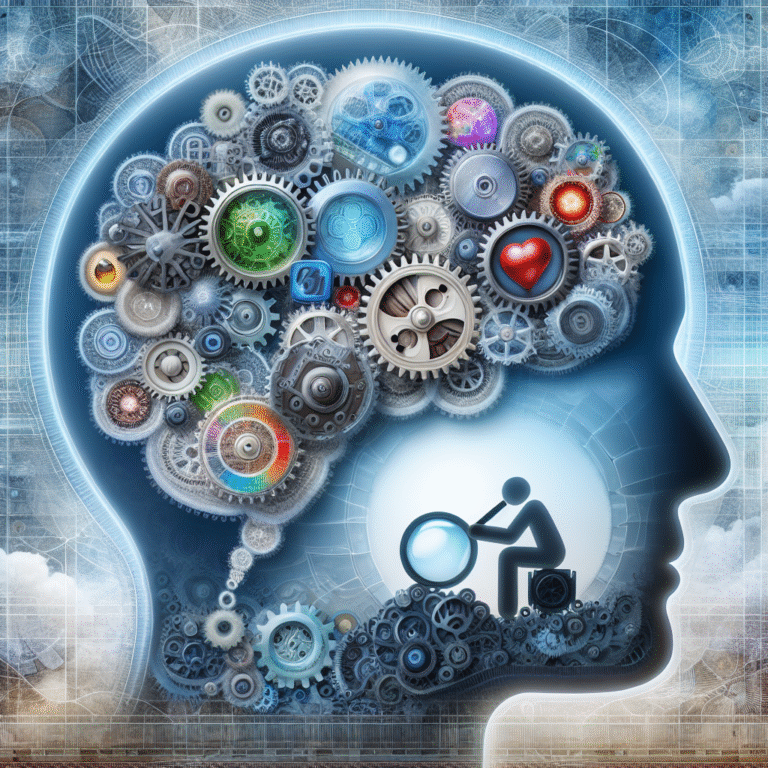Addiction’s Grip: How Substances Can Rewire Your Brain
Introduction
Imagine a world where a single choice can alter the very fabric of your brain. Addiction’s grip isn’t merely an unfortunate outcome; it is a complex psychological phenomenon that fundamentally changes how we think, feel, and interact with the world. With substances like alcohol, opioids, and even sugar impacting our brain chemistry, understanding the neurological implications behind addiction becomes essential. This article delves into Addiction’s Grip: How Substances Can Rewire Your Brain, providing deep insights and information that can lead to better awareness, prevention, and recovery.
The Science Behind Addiction and Brain Chemistry
Understanding Brain Wiring
The human brain consists of approximately 86 billion neurons, organized into intricate networks that form our thoughts, emotions, and behaviors. Central to understanding addiction’s grip is the concept of neuroplasticity—the ability of the brain to reorganize itself by forming new neural connections. This means that repeated substance use can rewire brain pathways, creating new cravings and behaviors.
Case Study: The Neurological Impact of Opioids
Consider a case study involving individuals recovering from opioid addiction. Research shows that chronic opioid use alters areas of the brain responsible for decision-making, impulse control, and reward processing. These modifications can persist long after cessation, illustrating how deeply Addiction’s Grip can take hold and rewire the brain.
Reward Pathways and Dopamine
One of the primary ways substances affect the brain is through the reward system, particularly the neurotransmitter dopamine. When you use a substance, dopamine floods the brain’s reward pathways, creating feelings of euphoria. This spike in dopamine can lead to a desire to repeat the behavior, solidifying addictive patterns.
Table 1: Comparison of Neurotransmitter Release
| Substance | Natural Dopamine Release | Spike from Substance Use | Duration of Euphoria |
|---|---|---|---|
| Alcohol | Moderate | High | 4-12 hours |
| Cocaine | Low | Very High | 15-30 minutes |
| Opioids | Low | Extremely High | 3-6 hours |
| Sugar | Moderate | High | 30-60 minutes |
The Role of Stress and Genetics
Both genetic predisposition and environmental stressors play significant roles in determining how substances can rewire the brain. Research indicates that people with a family history of addiction are more vulnerable to developing substance use disorders.
Case Study: The Impact of Genetics on Addiction
In a family study focusing on alcohol addiction, findings revealed that genetic markers contributed to nearly 50% of the risk factor for developing an alcohol use disorder. This emphasizes the importance of recognizing not just environmental triggers but also the inherent vulnerabilities individuals might face.
The Cycle of Addiction: Craving, Use, and Withdrawal
The Craving Brain
Understanding how substances can exert Addiction’s Grip involves dissecting the cyclical nature of addiction: craving, use, and withdrawal. After the initial high, the brain begins to crave the substance to recreate that feeling. This craving is particularly strong because withdrawal symptoms can be physically and psychologically distressing.
Withdrawal and Neuroadaptation
As the brain becomes accustomed to the substance, it requires more to achieve the same effect (a phenomenon known as tolerance). When the substance is removed, withdrawal sets in, which can manifest through physical symptoms (like nausea or tremors) and psychological issues (like anxiety or depression).
Diagram 1: The Cycle of Addiction
Visualization of the cycle, demonstrating the process from craving to withdrawal.
The Long-Term Effects of Addiction
Chronic substance abuse leads to neuroadaptation, where the brain begins to function normally only in the presence of the substance. This results in decreased natural rewards and overall well-being, further entrapping individuals in addiction’s grip.
Case Study: Long-Term Marijuana Use and Mental Health
A longitudinal study of long-term marijuana users found that significant alterations in emotional regulation and cognitive function persisted even years after quitting, showcasing the lasting effects of addiction on mental health.
Emerging Research: Potential Treatments and Recovery
New Approaches to Recovery
Understanding Addiction’s Grip: How Substances Can Rewire Your Brain opens doors to innovative treatment strategies, ranging from pharmacological interventions to behavioral therapies.
Table 2: Current Treatment Modalities
| Treatment Type | Description | Effectiveness |
|---|---|---|
| Medications (e.g., Naltrexone) | Reduces cravings and withdrawal | 60-80% relapse prevention |
| Cognitive Behavioral Therapy | Modifies dysfunctional thinking | 50-70% reduction in substance use |
| Support Groups (e.g., AA) | Community support and accountability | Success varies by individual |
| Mindfulness Techniques | Enhances self-regulation and coping | 30-40% decrease in relapse |
Mindfulness and Neuroplasticity
Cultivating mindfulness can counteract the brain changes associated with addiction. Mindfulness practices have been linked to increased grey matter density in the hippocampus, improving memory and emotional regulation, which can be particularly beneficial in recovery.
Case Study: Mindfulness-Based Relapse Prevention
A study on mindfulness-based relapse prevention found that participants who engaged in mindfulness practices had significantly lower rates of relapse compared to a control group, demonstrating a viable recovery path for those ensnared by addiction’s grip.
Supporting Loved Ones in the Battle Against Addiction
Strategies for Families
If you have a loved one struggling with addiction, understanding the neurological and psychological triggers can help you provide effective support.
Educate Yourself: Learn about addiction’s grip and its effects on the brain. Knowledge equips you to respond with empathy rather than frustration.
Encourage Professional Help: Suggest therapy options or support groups as part of their recovery journey.
- Practice Patience: Recovery is a long and often winding road. Celebrate small victories and be there through setbacks.
Communication Techniques
Open communication fosters trust. Use "I" statements to share your feelings without placing blame—this way, your loved one is more likely to engage positively with you.
Conclusion
Addiction’s Grip: How Substances Can Rewire Your Brain offers profound insights into a pervasive and complex issue faced by millions worldwide. By understanding the brain’s mechanisms and acknowledging the intricate interplay of genetics, environment, and neuroplasticity, we can better navigate prevention and recovery strategies.
Recognizing that healing is possible empowers not only those struggling with addiction but also their families and communities. Let’s transform knowledge into action, moving from a place of fear about addiction to one of understanding, support, and hope.
FAQs
1. What physical changes occur in the brain due to addiction?
Addiction alters neurotransmitter levels, particularly dopamine, and affects brain areas linked to decision-making, impulse control, and emotional regulation.
2. Can someone recover from addiction completely?
Yes, many individuals achieve full recovery through a combination of therapy, support groups, and lifestyle changes, although some may continue to face challenges related to cravings.
3. What role does environment play in addiction?
Environmental factors, such as stress, trauma, and peer influences, can significantly increase the risk of developing an addiction, sometimes even more than genetic predisposition.
4. Is addiction a disease or a choice?
Addiction is considered a complex disease that involves physiological changes and behavioral aspects. While choices can lead to substance use, the brain changes caused by addiction often diminish control over those choices.
5. How can I help someone struggling with addiction?
Offer your support through education, encouragement, and patience. Suggest professional help and participate in therapeutic activities to foster a positive environment.
Understanding Addiction’s Grip: How Substances Can Rewire Your Brain is not just an academic inquiry; it is a call to action for individuals, families, and communities to confront the issues of addiction with compassion and informed strategies.
This rich exploration of addiction aims to inspire readers to deepen their awareness and advocacy, sparking conversations and solutions to combat the complexities of addiction in today’s world.













